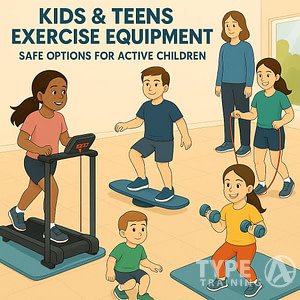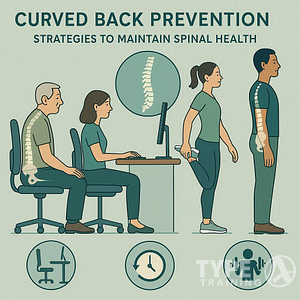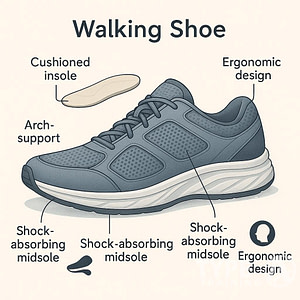Are you looking to level up your strength training routine? Free weights might be the answer you’ve been searching for.
Free weights are better than machines because they engage multiple muscle groups, enhancing your functional strength and stability. This characteristic makes them invaluable for real-world movements and athletic performance.
When you use free weights like dumbbells or barbells, you’re not only lifting the weight but also controlling the movement in multiple planes. This builds a more comprehensive set of skills and muscles than the fixed motion paths of machines.
Popular posts:
Additionally, free weights offer versatility that machines cannot match, enabling you to adapt and change your workouts as your fitness level advances.
To make the most out of your exercise routine, understanding the how and why of using free weights versus machines can transform your approach to fitness.
Whether you are a beginner or a seasoned gym-goer, integrating free weights into your regimen can optimize your results and keep your workouts fresh and challenging.
Key Takeaways
- Free weights engage multiple muscle groups.
- They enhance functional strength and stability.
- Free weights offer greater versatility in workouts.
Benefits of Free Weights Over Machines
Free weights offer advantages such as enhanced muscle activation and greater freedom of movement, which contribute to more effective workouts and muscle development.
Enhanced Muscle Activation and Stimulation
Using free weights requires you to engage multiple muscle groups simultaneously. Unlike machines, which often isolate specific muscles, free weights demand the coordination of stabilizer muscles.
This leads to increased muscle activation and stimulation, promoting better strength and muscle growth.
For example, when performing a bench press with free weights, your body must stabilize the weights, engaging muscles in your arms, shoulders, and chest. This results in a more comprehensive workout compared to using a chest press machine, which mainly targets the pectoral muscles and minimizes involvement of stabilizers.
Additionally, free weights can facilitate functional strength training. Mimicking real-life movements, free weights help improve balance and coordination. This kind of training can be beneficial in daily activities as well as in sports, where coordinated muscle use is essential.
Greater Freedom of Movement and Flexibility
Free weights offer a broader range of motion compared to machines. Machines usually operate on a fixed plane of motion, restricting how your body moves.
Free weights allow you to move in multiple directions, leading to improved flexibility and better overall muscle engagement.
For instance, exercises such as lunges or dumbbell presses can be performed in various planes, accommodating natural body movements. This unrestricted movement enhances joint flexibility and reduces the risk of imbalances in muscle development.
Moreover, the ability to perform a wide range of exercises with free weights can lead to diversified workouts, preventing plateau and encouraging continuous muscle growth.
Building Functional Strength and Stability
Free weights excel at building functional strength and stability essential for everyday movements. They engage core muscles and improve balance while targeting stabilizing muscles necessary for maintaining posture and movement efficiency.
Improving Core Strength and Balance
Using free weights requires you to stabilize your body, engaging more muscle groups. Exercises like squats, deadlifts, and overhead presses demand strong core control.
This improves your ability to balance and perform everyday tasks more efficiently.
Training with free weights also helps you maintain balance.
For instance, holding a dumbbell in one hand during a lunge forces your body to stabilize itself, promoting better balance and overall strength. This makes your workout more dynamic and effective.
Engagement of Stabilizing Muscles
Free weight exercises engage stabilizer muscles which help maintain proper form and posture.
For instance, while performing a bench press with dumbbells, your shoulder stabilizers work harder compared to using a machine.
Working out with free weights also enhances full-body strength.
For example, kettlebell swings and cleans require coordination and activate multiple muscle groups simultaneously. This involvement helps in building functional strength, which is vital for real-world activities.
Technique and Range of Motion
Free weights offer significant advantages when it comes to technique and range of motion. These benefits are crucial for achieving optimal performance and preventing injuries during workouts.
Importance of Proper Form
Using free weights necessitates maintaining proper form throughout exercises.
Unlike machines, free weights allow your body to move naturally, which helps you develop and reinforce correct movement patterns. This reinforces muscle memory and coordination.
Proper form with free weights engages stabilizing muscles, which are often underused with machines.
For instance, performing squats with a barbell demands attention to your stance, back alignment, and depth. This comprehensive engagement helps build more robust and functional strength.
Additionally, free weights force you to be mindful of balance, coordination, and precision, reducing the risk of bad posture and related injuries.
Adapting to Natural Movement Patterns
Free weights mimic real-life actions, allowing for movements in multiple planes. This adaptability is crucial for developing a full range of motion, improving flexibility, and enhancing muscle coordination.
Exercises like dumbbell presses and rows enable your joints to move through their natural path, which may not be possible with the fixed trajectories of machines.
This freedom not only makes workouts more effective but also reduces stress on joints and minimizes the risk of repetitive strain injuries.
Additionally, adapting to these natural movement patterns can improve overall athletic performance and functional strength, making free weights a versatile tool for any fitness regime.
For further reading about this topic, consider exploring Healthline or BarBend for more insights.
Versatility and Adaptability of Training
Free weights offer high versatility and adaptability in your training routine. They allow for diverse exercises and can be easily tailored to various fitness goals.
Variety in Exercises and Workouts
Free weights provide nearly limitless exercise options. You can use dumbbells, barbells, or kettlebells for numerous movements like presses, rows, and squats. This variety helps you target different muscle groups and develop a well-rounded physique.
By incorporating different weights and equipment, you can also adjust the complexity of your workouts.
For instance, switching from a barbell bench press to a dumbbell bench press involves more stabilizing muscles, which enhances overall strength and coordination.
Moreover, free weights accommodate both compound and isolation exercises, making them suitable for routines focused on building strength, endurance, or muscle mass.
Suitability for Different Fitness Goals
Free weights can be adapted to meet a wide range of fitness goals. Whether your aim is hypertrophy, strength, or endurance, you can modify the weight and volume of your lifts to suit your objectives.
For muscle growth, high-resistance exercises like heavy squats and deadlifts are effective. In contrast, lighter weights with higher repetitions improve muscular endurance.
This flexibility makes free weights a valuable tool for tailoring your training program.
Additionally, free weights are excellent for sports-specific training. They allow you to mimic natural movements and positions encountered in various sports, enhancing performance and reducing injury risk.
Using free weights also promotes greater functional fitness. Exercises that engage multiple muscle groups and require balance and coordination can improve your overall physical capabilities.
Risks and Considerations
When opting for free weights over machines, it’s essential to understand the potential risks, particularly regarding injury and the learning curve for beginners.
Understanding the Risk of Injury
Free weights require better control and coordination. Incorrect form can lead to significant injuries, including strains and sprains.
For example, improper technique during squats can cause lower back or knee injuries.
Free weights do not provide the same guided movement as machines, increasing the risk of injury due to improper alignment or muscle imbalance. Novices may find this challenging without proper instruction. Using heavy free weights also requires a spotter to prevent accidents.
Invest time in learning proper form and safety practices. Incorporating warm-up routines and gradually increasing weight can mitigate injury risks.
Learning Curve for Beginners
Beginners can find free weights intimidating. Unlike machines, which guide you through movement, free weights demand understanding of proper form.
This learning curve can lead to frustration or improper technique.
Starting with lighter weights helps build confidence and ensures correct form. Personal trainers or instructional videos are invaluable for beginners to grasp dynamic movements involved with free weights.
Practice and patience are crucial. Persevere through initial challenges and focus on mastering foundational exercises like deadlifts and bench presses before progressing to more complex routines.
Case for Machines in Strength Training
Strength training machines offer specific benefits such as controlled movements and particular advantages for specific populations, including those in rehabilitation and seniors.
Controlled Movements for Targeted Training
Weight machines provide a controlled environment for your movements, which can be particularly beneficial for isolating specific muscles. This isolation allows targeted training, helping you focus on strengthening particular areas.
The machines guide your range of motion, reducing the risk of improper form. This can be valuable for those new to strength training or looking to avoid injuries. For experienced lifters, machines can supplement free weight routines by precisely targeting muscles that need extra attention.
Machines also offer adjustable resistance, making it easy to increase or decrease weight without complex setups. This flexibility helps maintain consistent progress and track improvements over time.
Beneficial for Rehabilitation and Seniors
Machines serve a critical role in rehabilitation and for seniors. The stability and support they provide are essential for individuals rebuilding strength and mobility after an injury. Physical therapists often incorporate machine-based exercises into rehab programs because they minimize strain on joints while still building muscle.
For seniors, weight machines offer a safer and more accessible option to maintain or improve strength. The fixed paths of motion reduce the risk of falls or improper technique, which is crucial for older adults. Additionally, machines like leg presses and chest presses are easier to use compared to their free weight counterparts, enabling effective and safe workouts.
With adjustable settings and the ability to support gradual increases in resistance, machines can help maintain muscle mass and enhance quality of life as you age. This consistent and controlled training environment makes them an invaluable tool for promoting long-term health and fitness in seniors.
Integrating Free Weights and Machines
Combining free weights and machines in your strength training routine can maximize your workout potential by leveraging the unique benefits of both. This approach can help you achieve more well-rounded fitness results.
Designing a Balanced Exercise Routine
To design a balanced exercise routine, start by incorporating both free weights and machines to target different muscle groups.
Free weights, such as dumbbells and barbells, help work multiple muscles simultaneously, while machines allow for more precise muscle isolation.
Create a mix of compound and isolation exercises. For example, use free weights for compound lifts like squats and deadlifts, which recruit various stabilizer muscles.
Machines can be excellent for isolation exercises, like leg curls or chest presses, which focus on specific muscles without requiring much stabilization.
Alternate between free weights and machines across your workout days. This method ensures that all muscle groups are trained effectively, prevents workout monotony, and reduces the risk of overtraining any single muscle group.
Personalizing Your Strength Training Program
Personalizing your strength training program requires setting clear goals and understanding your body’s needs. Consulting a personal trainer can provide customized guidance, especially if you’re new to integrating free weights and machines.
They can help you tailor exercises based on your fitness level, goals, and any physical limitations.
For those aiming to build muscle mass, prioritize free weights for their versatility and effectiveness in engaging multiple muscle groups.
Including machines, however, can still be valuable for safely performing certain exercises and ensuring proper form, particularly if you have joint concerns.
Track your progress and adjust your workout plan as needed. By listening to your body and making adjustments, you can keep improving and stay aligned with your strength training goals.
Frequently Asked Questions about Why Free Weights Trump Machines
Free weights are favored for their versatility and ability to engage more muscles during workouts. This section addresses common questions about the benefits and differences between free weights and machines.
What are the advantages of using free weights for muscle development compared to machines?
Free weights activate stabilizer muscles, enhancing overall muscle coordination. They allow for a full range of motion, which can lead to more effective muscle growth.
Exercises such as squats and deadlifts can also mimic real-world movements, leading to functional strength.
How do free weights influence weight loss differently than resistance machines?
Free weights often require more energy expenditure due to the engagement of multiple muscle groups. This can lead to higher calorie burn during and after workouts.
Exercises like kettlebell swings and snatches also incorporate cardiovascular elements, boosting fat loss.
What are the pros and cons of utilizing machines versus free weights in bodybuilding?
Machines provide controlled, targeted muscle isolation, reducing injury risk for precise muscle building. However, free weights offer greater muscle activation and real-life strength application.
The main drawback of machines is their limitation in replicating the natural movement patterns that free weights can offer.
Are there specific benefits for beginners starting with free weights instead of machines?
Starting with free weights encourages proper form and full body engagement from the beginning. This builds foundational strength and coordination. Beginners may benefit from learning how to stabilize and balance the weights, which are essential skills for advanced lifts.
How does the effectiveness of machine exercises compare to free weights for overall strengthening?
While machines are effective for isolating specific muscles, free weights contribute to overall strength by engaging multiple joints and stabilizing muscles. This holistic strengthening is vital for improved functional fitness and real-life activities.
Is it possible to achieve significant muscle growth by using only machines?
Yes, machines can lead to significant muscle growth, especially for targeted muscle work. They ensure safe practice by limiting unwanted range of motion.
Nonetheless, incorporating free weights can optimize functional strength and balance. These are essential components for comprehensive muscle development.














